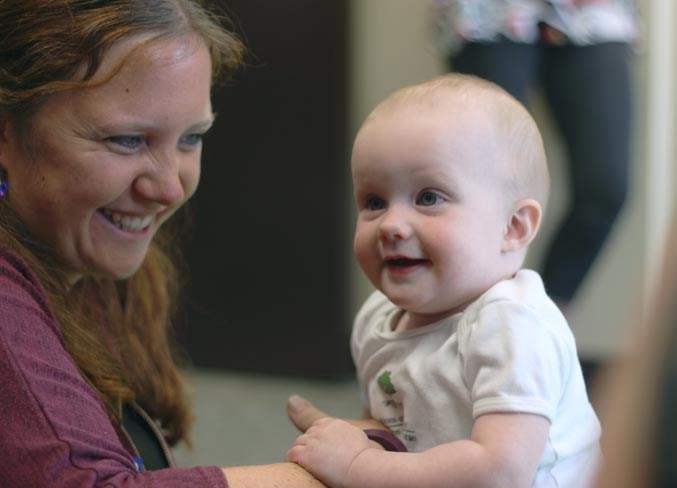Teaching children empathy and how to gauge their growth without comparing themselves to their peers can be a tricky task but no one seems to do it better than babies. Roots of Empathy, a program that invites babies under one year old (and their care giver) to participate in local elementary school classrooms , just wrapped up its fourth year of successful programming in schools. This year the program was run at Glenbow School for a Grade 1/2 split class and at Fireside School for a Grade 5 class and a Grade 1/2 split class. The program focused on the babies' capabilities, how they progressed throughout the school year and how students can translate these transitions into their own milestones throughout the year. The goal is to show the children that just as every baby develops differently from one another, so do their peers develop differently themselves. "I go in and talk to them about the baby and (for example) sleep and what that might mean," said Carey Wilkinson Lee, a Roots of Empathy programmer who leads the classroom sessions alongside a parent and baby. Once the children get a grasp on how sleep affects babies, Wilkinson Lee draws a parallel to the students and how sleep might affect their mood or school work. Students are also encouraged to consider how two babies of the same age are at different physical and mental stages of growth might be similar to themselves and their peers who are at different learning stages. "What we learned in the program is that every baby is different. We have babies that are the same age but they're doing different things – one can walk and one can't. So you may know your times tables and you may not and that's OK, you will. We're all on our own pace." There are 27 visits to the schools between October and June where nine themes are tackled. On the third visit of each theme, a baby is brought in. Among the themes are sleeping, safety, milestones and crying. Wilkinson Lee said learning about the babies also provides context for students with infant siblings and why it seems the baby gets more attention than them. Ashley Fox, a mother who participated with her infant daughter, Abigail, said she noticed an emotional break through with a student. "We really thought one of the boys was struggling emotionally quite a bit. He had excused himself from class actually because he couldn't sit around the blanket anymore," Fox said. The student had appeared to be struggling with the amount of attention Abigail, the Roots of Empathy baby 'teacher,' seemed to get. "He loved her but he was a bit jealous actually because he felt 'she gets all this love and where was that in my growing up,'" Wilkinson Lee said. "And then, at the very end as we were cleaning up, he grabbed Abigail and held her," Fox said explaining that the student seemed to have finally pushed past his feelings. "You could see a full emotional change, because he had a lot of angst and (then) he instantly had a bit of purpose, a moment of just calm and focus," Fox said. "Since that point, he was quite a bit more connected with her and looking forward to her coming and what not." The next Roots of Empathy program will begin in the next school year.




